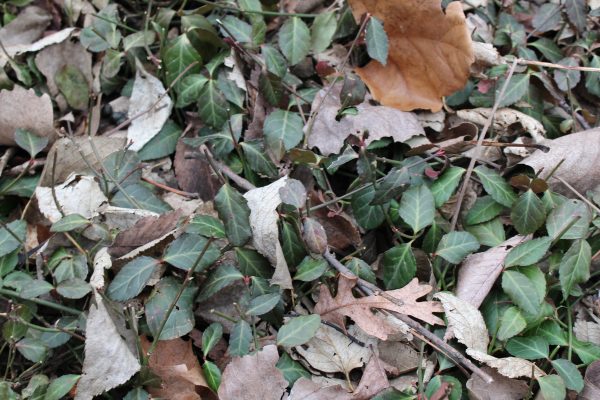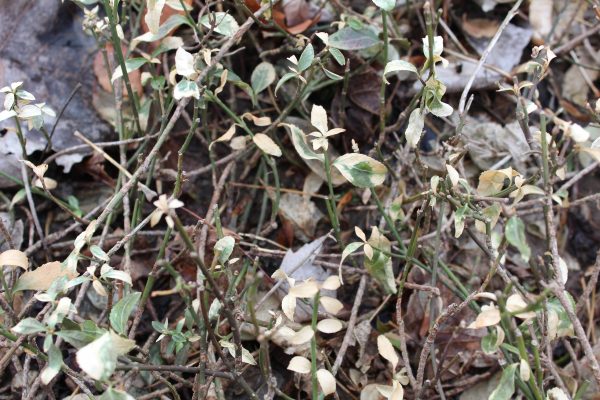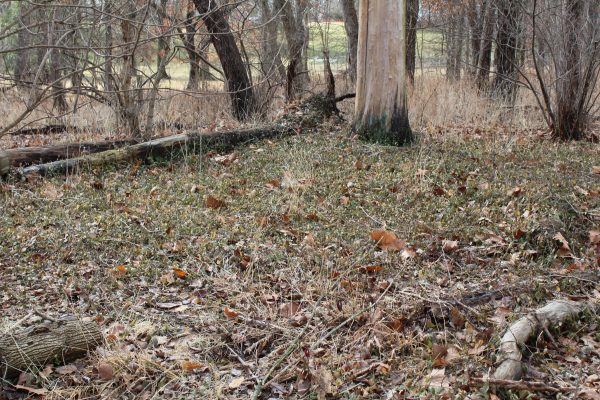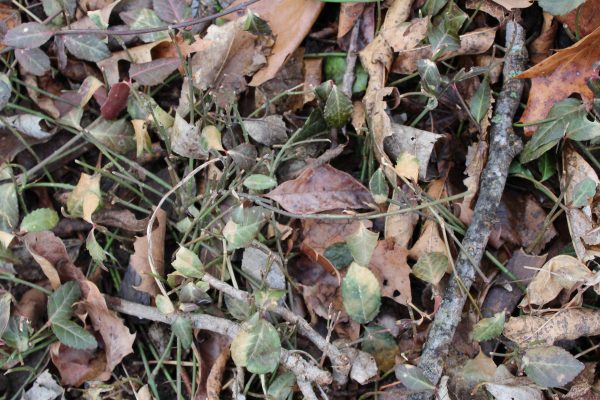Walking through Litzsinger, I’m happily surprised to see signs of the wintercreeper, or Euonymus fortunei, deteriorating and dying in the woodland areas where it was sprayed last fall. Euonymus is an evergreen vine and becomes most noticeable in the winter, when other vegetation has gone dormant or dead vegetation is laid flat by snow and rain. This year, you may notice yellow and light green swaths throughout the woods where the Euonymus is dying. The layers and colors remind me of the inside of an avocado.
Typically, Euonymus doesn’t show signs of being affected by the herbicide application for about 6 months following the spraying. A complete kill can take 12 to 18 months and can still require follow-up treatment, such as another spray application or hand-pulling. Waiting to see the results can be disheartening, because at first it doesn’t seem as though the treatment is working. Now, to see the effects of the foliar application only 3 months later feels like some progress is being made.
I believe that there are a few factors contributing to its rapid demise this year, which includes experimenting with a few different herbicide application methods, extra exposure to the cold snap, and gradual weakening by treatments over the course of two years in some areas.
Methods:
The Wahoo Grove (Woods 4) and the area adjacent to it (Woods 5) were sprayed twice in the fall of 2016 and twice in the fall of 2017 with a 3% solution of glyphosate. Those areas were sprayed again in 2017 because the vines were still very dense, although the leaves were visibly stunted. I think the two years of spraying has finally done it in, as it’s now deteriorating quickly. Hand-pulling was also done in the Wahoo Grove in 2017 to make room for plantings.
Woods 14 was leaf blown, weed whacked to further weaken the vines, and then sprayed once with a 6% solution of glyphosate.
The wet berm near the cabin was leaf blown, but I didn’t get around to spraying it last fall. I noticed that some of the vines were yellowing, my guess is just from being exposed to the cold by removing leaves. I plan to weed whack and spray it on a warm winter day.




